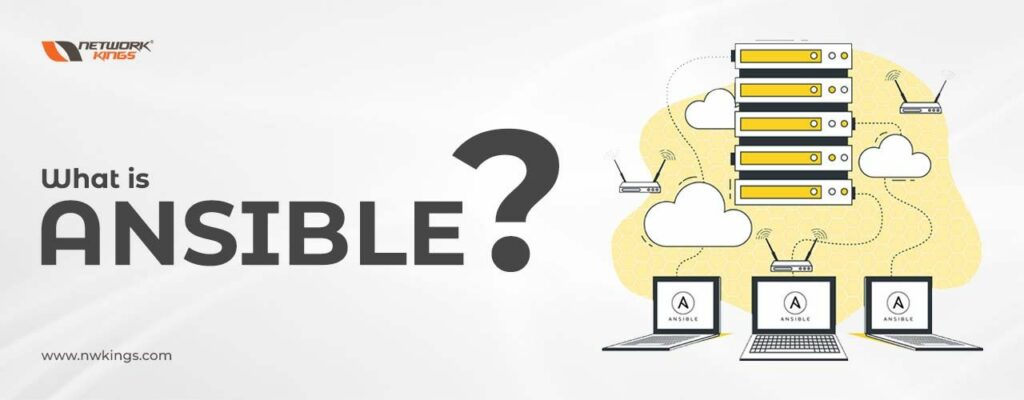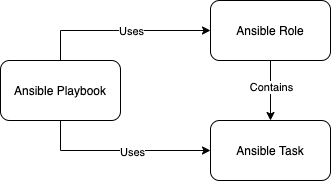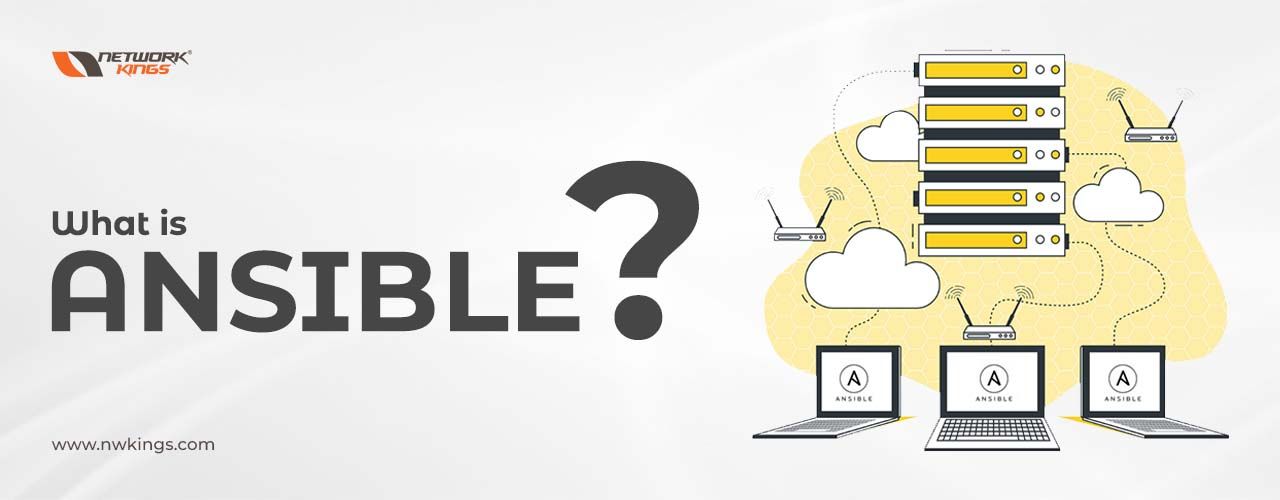
What is Ansible? – An individual interested in making a career in DevOps must have the answer to this very question. Today, we shall be discussing the same. Ansible is one of the highly efficient automation tools of DevOps.
What is Ansible?
Ansible is an open-source software platform that caters for configuration management, application deployment, and governance of IT infrastructure across cloud-based systems in addition to physical ones along with virtual and container environments. It serves primarily as a DevOps tool for automated configurations as well as deployments of applications.
Using Ansible one can effortlessly automate tasks like managing services on multiple servers at minimal effort which makes it most suitable for teams searching out a comprehensive solution that streamlines their operations about IT matters. We hope this blog has contrived to provide you with an elementary overview concerning what Ansible furnishes; stay tuned for further details on how to precisely use Ansibe to manage your particular environment related to technology infrastructure.”
Understanding the Concept of Ansible
Ansible is a well-liked open-source IT automation platform that furnishes an uncomplicated, agentless way of automating numerous IT pursuits. By utilising Ansible, IT teams can efficiently manage, configure and deploy software across multiple systems with greater speed. Moreover, its incorporation in infrastructure supplies improved overall stability, protection and scalability for the same. The concept underpinning Ansible revolves around capitalizing on an automation language as a means of defining tasks which can then be executed uniformly over different systems.
The use of Ansible’s domain-specific language, called YAML (Yet Another Markup Language), is advantageous due to its ability to facilitate the management of complex deployments and eradicate the requirement for manual configuration across each system. This benefits from YAML being easy to read and write, which makes it an ideal option when automating complicated configurations.
Ansible boasts numerous benefits as compared to conventional server-based configuration management solutions like Chef or Puppet. This is due, at least in part, to its modules which have been crafted for particular platforms such as AWS and Azure. Therefore, individuals who are not well versed in coding languages like Python or Ruby can utilise these modules when devising automation scripts rather than crafting their code from scratch. Additionally, Ansible also facilitates hooks into other prominent DevOps tools including Jenkins and GitLab making it straightforward to incorporate with prevailing workflows.
It necessitates no specialised know-how or background with server provisioning and installation – it is sufficiently simple for non-specialized users to begin promptly without any preceding experience.
Furthermore, since Ansible employs YAML rather than coding, reading and retaining automation scripts are much more straightforward compared to languages such as Ruby or Python which may demand additional elaborate syntactic or programming capabilities. Moreover, because there is not a master/agent structure in position when utilizing Ansible, there are no extra resources needed to perform tasks – it’s just one tool controlling all your servers simultaneously.
Unravelling Ansible Overview and its Significance
Ansible is a publicly accessible automation platform that has been fashioned to assist users in the management of applications and technology infrastructure via cloud-based systems, as well as other related surroundings. With its simple yet effective declarative architecture for system administration goals, Ansible can furnish almost any task with automatisation.
Its potential spans multiple technologies and applications covering Microsoft Windows systems, Linux distributions, networking devices, cloud services; databases and much more – thereby making it an ideal capabilities source for building complex automated procedures when handling expansive infrastructures catered towards numerous teams or organisations.
In recent years, Ansible has been accumulating momentum due to its usability and scalability. Its adaptability permits users to start modestly with a few orders but eventually expand as their necessities extend. Additionally, since it is open source, it can be amalgamated with current software solutions, enabling clients to leverage the capacity of Ansible without needing to entirely overhaul their existing setup.
Besides this, Ansible also provides an extensive set of instruments for controlling security configurations across numerous systems or appliances. Therefore not only does Ansible cut down on the time needed for administering intricate task management but it also amplifies the general safety posture of organisations taking advantage of this technology.
An Overview of Ansible's Interface and Usage
Ansible is an open-source configuration management and application deployment tool that provides customers with the capacity to administer and regulate multiple machines from a single source. Its interface has been constructed on SSH, permitting users to manage systems remotely through commands.
Moreover, Ansible can be utilised for automating resource management tasks such as software installation, system and application configuration, user account creation, firewall setup etc., thus streamlining the process of establishing and managing assorted types of IT infrastructure while guaranteeing uniformity across all deployed systems.
Furthermore, its agentless architecture provides increased scalability as it only necessitates SSH connectivity for communication with managed nodes remotely. It also affords support to various programming languages such as Python, Ruby and PowerShell which allows the writing of scripts or customizations based on customer requirements. This facilitates integration into existing workflows by administrators and developers alike; consequently making Ansible simpler to use.
Moreover, features like playbook execution are available for automation tasks that need repeated implementation while dynamic inventory enables simple connection with third-party databases or cloud providers e.g Amazon EC2 or OpenStack in addition to built-in backing from multiple cloud platforms being provided too – thus yielding a comprehensive set of capabilities, rendering management of intricate environments much more effortless through the offering of a single point control over them.
Step-by-step Guide to Get Started with Ansible Basics

Ansible is an open-source automation platform that can be utilised to manage IT operations, configuration management and application deployment. It supplies a straightforward yet effective approach to automating intricate processes either in the cloud or on-premises. By using Ansible, users can define and set up tasks comfortably within their IT environment. This article will provide a comprehensively detailed guide about how one may initiate with Ansible Basics.
The initial step involves installing the software itself; one could install it directly from its official website or employ an apt command via the terminal as well.
Upon installation, the creation of a playbook file and any necessary task files must be carried out. Playbooks are YAML documents that provide instructions to Ansible regarding how it should proceed with its tasks; they may be likened to directions written in a programming language but are much more straightforward to comprehend.
Subsequently, the inclusion of these playbooks and tasks into an inventory document has been done so that Ansible knows what host it needs to implement against. At this point, once all preparations have been completed satisfactorily, one will then be primed to execute their playbooks effectively!
Before doing so, however, it is advocated that you authenticate your playbooks using the ansible-playbook –syntax-check command; this will ascertain if there are any mistakes or typographical errors in the playbook before attempting to execute it on live servers. Having authorised and ascertained that all of your scripts perform correctly, you may then initiate tasks by running the ansible-playbook command kept company with the path of your playbook file (e.g., ansible-playbook my playbook file).
You can observe the output from these commands employing the -v (verbose) flag which shall supply more comprehensive information about what transpires behind closed doors. When your playbooks have completed their tasks effectively, you shall be able to identify whether they have met their desired aftermath or not!
Detailed Insight into Ansible as an Automation Tool

Ansible is a potent automation tool that is employed for configuration management, application deployment and software provisioning. Its design renders it capable of providing an easy-to-use platform for IT professionals to streamline their tasks with its flexibility, extensibility and scalability.
Moreover, this makes Ansible the ideal solution for organisations seeking the reduction or elimination of manual processes throughout operations. Furthermore, Ansible utilises YAML (YAML Ain’t Markup Language) as the language required for automated tasks.
YAML is human-readable, thus making it easier to utilise than other scripting languages such as JSON or XML. Furthermore, YAML makes simplifying complex configurations into a more understandable format an effortless process. Ansible’s Playbook system enables users to construct what is referred to as “playbooks”, which serve the purpose of characterising precisely what needs doing; these playbooks evidently can be employed repeatedly across different systems without having any modifications made each time they run.
At its basis, Ansible has the capability of enacting deployments for applications and likewise facilitating integrations with existing infrastructure components like databases and cloud services alike.
Ansible simplifies the network configuration by providing a unified Application Programming Interface (API) which allows system administrators to effortlessly reconfigure their networks, avoiding the need for manually editing config files or scripts whenever there are changes in the environment.
Additionally, Ansible integrates with popular tools such as Jenkins and GitHub thus allowing users to trigger automated scripts from within those applications when new code is deployed or altered.
Furthermore, its security features provide control over user access rights through Role-Based Access Control (RBAC), assuring that sensitive data stays secure whilst permitting teams to only have access to resources necessary for completing given tasks.
Moreover, since all operations take place via Secure Shell (SSH) rather than requiring agent software be installed onto each machine being managed this guarantees no extra burden needs consideration during automation projects deployment with Ansible.
How Ansible Works as a Powerful Configuration Management Tool?

Ansible is an open-source configuration management tool which furnishes a potent automation language for describing and managing IT systems. It facilitates administrators to specify the state of their environment that they desire their systems to be configured, and automatically puts into effect such settings to preserve those systems in that particular condition.
Ansible functions by connecting with nodes via SSH or Windows Remote Management (WinRM), thereafter executing operations on them as per the playbook files composed using YAML.
Playbooks defined by Ansible can specify a range of tasks to be executed together or independently for systems such as web servers and databases, amongst other components, to be swiftly configured. Furthermore, Ansible can utilise “roles” which have been pre-defined about common duties like setting up web servers and databases; leading towards the ease through which administrators can configure multiple machines rapidly with a uniform setup.
Moreover, via using Ansible Administrators can assess any changes they make prior compared before applying them to production systems thus lowering the risk of involuntarily misconfiguring system stability. All this results in shorter deployment times when implementing across numerous devices than configurations done manually traditionally would allow; making it invaluable that Infrastructure Administrators today possess knowledge surrounding the use of the tool called ‘Ansible’.
The Role of Ansible in the DevOps Landscape

Ansible is an open-source framework for IT automation and DevOps, offering users the capability to automate laborious tasks associated with configuration management, deployment and orchestration. It has become a well-liked tool among DevOps teams managing sundry servers and services due to its blend of simplicity, adaptability, scalability and speediness.
Ansible enables users to define a set of instructions in such a fashion that can be easily apprehended by both technical as well as non-technical individuals. By utilising Ansible’s playbooks, developers can explain complex deployments without necessitating scripting experience or profound knowledge of system architectures.
From a DevOps standpoint, Ansible facilitates the process of automated system setup and upkeep. This incorporates streamlining the apportioning of naked metal frameworks just as virtual machines in private or public cloud situations.
Furthermore, it assists with configuration management by furnishing systems for strategy authorization over different servers. Moreover, Ansible supports organisations in accomplishing more proficient programming conveyance pipelines by automating regular errands like testing, software constructs and deployments.
Additionally, it can help guarantee adherence to industry regulations such as PCI DSS or HIPAA by providing configuration control across various components in an organisation’s IT architecture; all while seamlessly integrating into pre-existing IT infrastructure allowing businesses to promptly adopt its features within their own set of capabilities without any difficulty whatsoever..
In summation then, thanks largely to its ability for automation and orchestration functions plus amalgamated integration opportunities that add extra ease –Ansible is indisputably one key component at play when devising success from a modern-day DevOps perspective hence why it has become such widespread use amongst today’s incumbent operations image alike ever since first being introduced several years ago.
Valuable Benefits of Integrating Ansible into Your System

Ansible is an open-source automation platform that affords more straightforward management of complex and disparate IT systems. It can be employed for configuration administration, application deployment, task automation, as well as other IT requirements. Ansible runs on the principle of “Infrastructure as Code” (IaC), which implies that rather than manually configuring or managing each server or component of hardware one by one, all particulars can be defined in a code file and then applied with a single command. This renders the control over IT infrastructure much easier and more effective.
Integrating Ansible into a system can bring about considerable advantages, particularly in terms of scalability. By replacing manual operations such as the deployment of applications or modifications to existing configurations with automated processes, it becomes possible to scale up or down at speed when required.
Additionally, complex tasks are simplified by breaking them up into reusable components which may be employed across multiple teams and environments; Furthermore automating tasks helps guarantee that they are all executed precisely without any errors – saving time spent on troubleshooting resulting from human mistakes. Another benefit offered by Ansible is an improvement in security measures.
By utilising automated tasks to manage the deployment process, one can be certain that there will not be any critical configuration settings left unsecured due to a lack of manual supervision – thus making the entire system more secure overall.
Moreover, Ansible’s role-based access control system enables administrators to assign individual privileges for each team member and constrain access to their requirements.
In conclusion, integrating Ansible into this structure will bring about savings in both time and money over an extended period by decreasing the necessary level of manual labour related to maintenance activities such as updating software versions or deploying new applications.
Automation makes it possible for these operations to be completed promptly and accurately with minimal effort from administrators – thereby freeing up precious resources which would otherwise have gone towards costs incurred by employing manual labourers.
Advanced Features Make Ansible a Preferred Tool
Ansible is a much sought-after automation tool, owing to its sophisticated features which enable users to configure systems with speed and efficiency, deploy applications and organise further intricate IT tasks such as never-ending deployments or updates that can be completed without causing any downtime. Ansible possesses an elementary yet powerful automation language designed for system administrators and developers so they can automate provisioning, and configuration management along with the deployment of applications across their IT environments.
Furthermore, Ansible offers platform neutrality; this means it can be applied on Windows systems in addition to Linux/Unix platforms together with Network devices alongside VMware ESXi plus OpenStack amongst other things.
Furthermore, its architecture is very lightweight because there exists no requirement for an agent or additional software on the managed nodes. As opposed to relying upon agents or custom security certificates which can be difficult to manage in large-scale deployments, Ansible employs Secure Shell (SSH) for connectivity which provides authentication and secure communication without necessitating any extra software.
Moreover, complex tasks can be carried out with simply a few commands or modules comprising resource description framework (RDF), JSON structure data types etc., rendering it easy to construct repeatable and manageable configuration scripts. The capability of Ansible allowing users to rapidly realise problems makes it the ideal tool for debugging applications as well as carrying out audits.
Finally, owing to its open source community-supported development model – anyone can contribute changes or new features – Ansible continuously evolves according to user requirements and feedback
Case Studies Showcasing Ansible's Effectiveness in Different Scenarios
Ansible is renowned to be one of the mightiest automation tools available, evidenced by case studies in different scenarios. This multi-platform tool has been employed with success whilst automating cloud computing milieus, managing containerised applications and offering configuration management on virtual as well as physical machines.
Furthermore, there have also been cases where Ansible’s capability for reducing operational expenses while reinforcing dependability and scalability within a data centre or cloud environment was considered outstanding. Moreover, it can be used to execute configuration activities without having any negative effects on system performance or usefulness.
By successful implementation of Ansible in various organisations businesses can grow nimblenesses, quicken development cycles and attend to their customers’ requirements more expeditiously and proficiently. Additionally, users are provided an opportunity through its compatibility with existing software sets they currently employ enabling them to benefit from automated possibilities that will upgrade the overall user experience.”
In summation, Ansible is an automation tool that has seen broad use within DevOps and Configuration Management. Its capability of allowing for the deployment of applications with relative ease contributes to reducing the time needed for manual configuration and maintenance tasks.
Moreover, its intuitive interface makes it even simpler to get up and running without delay. To be sure, Ansible stands as a powerful and dependable open-source automation tool which countless organizations have taken on board to automate their regular activities.
Are you considering gaining knowledge about an advanced and progressive field? Then why not sign up for our DevOps Master Programme? Our programme has been designed to equip graduates with the abilities, insight and proficiency they require to prosper within the exhilarating world of DevOps.
We provide practical instruction given by qualified tutors from the business who will supply you with all of the capabilities necessary to advance your career prospects. Through our offering, you can commence your professional development and gain a precious understanding of this swiftly evolving industry. So what are you waiting on? Sign up now and kick off immediately.
Happy Learning!


